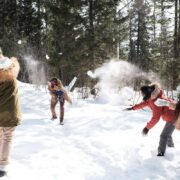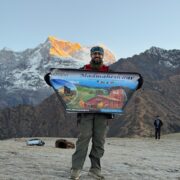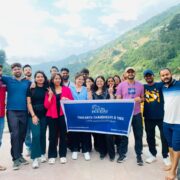
Chandrashila Summit Trek – Explore the Himalayas
Overview and Significance of the Chandrashila Trek: A Himalayan Ascent
Chopta Tour Package: The Chandrashila Trek, often a highlight of a Chopta tour package or undertaken as a dedicated Chopta Tungnath trek, offers a captivating exploration into the heart of the Indian Himalayas. Perched at an impressive altitude of approximately 3,690 meters (12,110 ft), the Chandrashila summit, aptly named “Moon Rock,” crowns the ridge above the revered Tungnath Temple in Uttarakhand. Its geographical significance lies in the unparalleled 360-degree panoramic vistas it commands, showcasing a breathtaking spectacle of some of the most majestic Himalayan peaks. Iconic giants like the snow-capped Nanda Devi, the trident-shaped Trisul, the sacred Kedar Peak, the elegant Bandarpunch, and the formidable Chaukhamba stand in proud array, painting an unforgettable canvas against the azure sky.
The popularity of the Chandrashila Trek stems from a compelling combination of factors. Its relatively easy accessibility and short duration make it an attractive option for both novice trekkers seeking their first Himalayan experience and seasoned adventurers looking for a rewarding climb. Unlike some of the more arduous high-altitude treks, the path to Chandrashila offers a manageable challenge, culminating in profoundly rewarding views. This accessibility often makes it a key component of many Chopta tour packages, allowing visitors to experience the region’s natural beauty without demanding extreme physical exertion.

Beyond its scenic allure, Chandrashila holds deep mythological significance, adding a layer of spiritual resonance to the journey. Local legends narrate that Lord Rama, after his victorious battle against the demon king Ravana, sought solace and meditated at this very spot. Furthermore, the moon god Chandra is believed to have spent considerable time in penance here, lending the summit its evocative name. This rich tapestry of mythology imbues the trek with a sense of history and sacredness, elevating it beyond a mere physical endeavor.
The journey to Chandrashila is intrinsically linked to the charming region of Chopta, often fondly referred to as the “Mini Switzerland of Uttarakhand.” With its sprawling scenic meadows and verdant forests, this picturesque locale serves as the primary base for the Chopta Tungnath trek. The trek typically involves traversing through these idyllic landscapes before ascending to the sacred Tungnath Temple. This temple, the highest Shiva temple in the world, is a significant stop along the way, offering both spiritual solace and architectural marvel. The final ascent from Tungnath to the Chandrashila summit is a relatively short but steep climb, the ultimate reward being the awe-inspiring panorama that unfolds from the “Moon Rock.” For those opting for a Chopta tour package, the Chandrashila trek often stands out as a highlight, encapsulating the region’s natural beauty, spiritual significance, and accessible adventure.
Difficulty Level and Physical Fitness for the Chandrashila Trek
Embarking on the Chopta Chandrashila trek from Delhi or focusing solely on the Tungnath trek presents an accessible adventure for a wide range of individuals. Generally categorized as easy to moderate in difficulty, this Himalayan exploration caters to both those new to trekking and seasoned enthusiasts. The initial leg of the journey, the 3.5-kilometer trail leading to the revered Tungnath Temple, is characterized by a well-maintained and often paved path. This gradual ascent makes it a comfortable introduction to trekking, allowing you to acclimatize to the increasing altitude without significant strain.
The subsequent 1.5-kilometer stretch that culminates at the Chandrashila summit introduces a slightly more challenging element. This final push involves a steeper incline, demanding a bit more physical exertion. However, its relatively short distance ensures that even those with moderate fitness levels can successfully navigate it. The reward for this final climb is the unparalleled panoramic vista awaiting at the top.

While the Tungnath trek itself is manageable, and the Chopta Chandrashila trek from Delhi is designed to be inclusive, a basic level of physical fitness is still recommended to fully enjoy the experience. This primarily entails the ability to comfortably walk for several hours at a time and manage some uphill terrain. Think of it as being able to comfortably walk around your neighborhood or engage in light hiking without significant discomfort.
To prepare for your Tungnath trek or the complete Chopta Chandrashila trek from Delhi, incorporating some regular physical activity into your routine can be beneficial. Simple cardio exercises like brisk walking, jogging, cycling, or swimming can significantly improve your stamina and endurance, making the trek more enjoyable. Additionally, incorporating some light strength training exercises, focusing on your legs and core, can help you handle the uphill sections with greater ease.
Ultimately, the Chopta Chandrashila trek is not designed to be an extreme physical challenge. Its beauty lies in its accessibility, allowing a broad spectrum of individuals to witness the majestic Himalayas. By possessing a basic level of fitness and perhaps engaging in some light preparation, you can confidently embark on this rewarding journey and soak in the stunning landscapes and spiritual ambiance that the region offers. Whether you’re planning a comprehensive Chopta Chandrashila trek from Delhi or focusing on the sacred Tungnath trek, a reasonable level of physical preparedness will enhance your overall experience.
Best Time to Visit the Chandrashila Summit for an Unforgettable Trek
Choosing the right time to embark on the Chopta Tungnath trek or the Chopta Chandrashila trek significantly impacts the overall experience. The region around Chandrashila experiences distinct seasons, each offering a unique charm and set of conditions. Generally, the most favorable periods for this Himalayan adventure are spring (March to May) and autumn (September to November).
Springtime, stretching from March to May, breathes vibrant life into the landscape. The weather turns pleasantly mild, with comfortable temperatures typically ranging between 5°C and 15°C. The skies are generally clear, offering excellent visibility of the majestic Himalayan peaks. However, the true spectacle of spring lies in the explosion of colors. The trails become adorned with blooming rhododendrons in various shades of crimson and pink, alongside a myriad of other wildflowers, transforming the region into a picturesque paradise. For those seeking a visually stunning Chopta Chandrashila trek, spring offers an unparalleled feast for the eyes and a refreshing trekking environment.

As the monsoon recedes, autumn (September to November) emerges with its distinct appeal. The air becomes crisp and invigorating, and the skies are typically crystal clear, providing unobstructed and breathtaking views of the snow-capped Himalayan giants. The landscape takes on a golden hue as the foliage begins its seasonal transition, adding a touch of warmth to the scenery. Temperatures during this period also hover around a comfortable 5°C to 15°C, making for ideal trekking conditions. For photographers and those prioritizing clear mountain vistas, autumn is arguably the best time to undertake the Chopta Tungnath trek and capture the grandeur of the Himalayas in their full glory.
In contrast, the summer months (June to August) coincide with the monsoon season. The region experiences heavy rainfall, which can make the trekking trails slippery, muddy, and potentially risky. While the landscape transforms into a lush green carpet during this time, the persistent rain and cloud cover often obscure the panoramic mountain views, a primary draw of the Chopta Chandrashila trek.
Winter (December to February) blankets the region in a pristine layer of snow, creating a magical winter wonderland. However, trekking during this period presents significant challenges. The trails become snow-covered and icy, requiring specialized gear and expertise. Additionally, the road to Chopta itself might be closed due to heavy snowfall, necessitating alternative routes like the Deoriatal trek for those still keen on reaching Tungnath and Chandrashila. While the snowy landscapes hold a unique charm, winter trekking is generally recommended for experienced trekkers comfortable with challenging conditions.
Therefore, for the majority of trekkers planning a Chopta Tungnath trek or a Chopta Chandrashila trek, spring and autumn offer the most favorable weather conditions, stunning scenery, and safe trekking environments, ensuring a truly memorable Himalayan experience.
Permits, Costs, and Booking Your Chandrashila Adventure
Planning your Chopta tour package from Delhi or a dedicated Chopta Tungnath trek involves understanding the necessary permits, potential costs, and booking procedures. For Indian nationals, the good news is that generally, no specific permits are required to undertake the trek to Chandrashila and Tungnath. This simplifies the planning process considerably, allowing you to focus on other logistical aspects of your journey. However, it’s always wise to stay updated on any potential changes in regulations, which can be checked with local authorities or tour operators closer to your travel date.
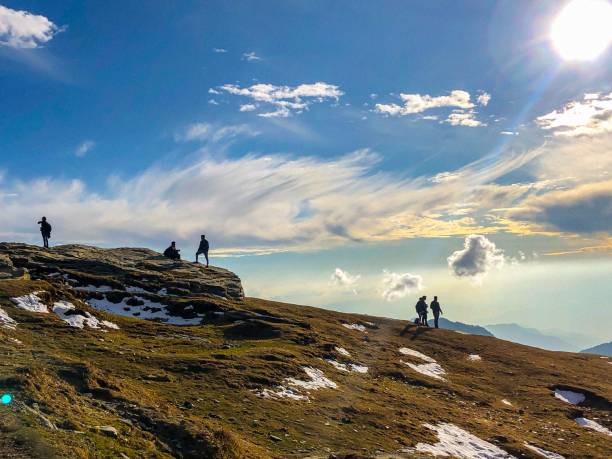
For foreign nationals interested in experiencing the beauty of the Chopta Tungnath trek, it is advisable to verify the latest regulations regarding permits. While currently, no specific trekking permits are typically mandated for this region, tourism policies can evolve. Consulting with reputable tour operators specializing in treks in Uttarakhand or checking the official websites of the Uttarakhand Tourism Development Board can provide the most accurate and up-to-date information. They can guide you through any necessary procedures or documentation that might be required.
While trekking permits might not be a primary concern for most, certain nominal fees might apply. These could include forest entry fees for accessing the Kedarnath Wildlife Sanctuary or camping charges if you plan on setting up camp in designated areas along the trek. Often, these minor charges are seamlessly integrated into the overall cost if you opt for an organized Chopta tour package from Delhi or a guided Chopta Tungnath trek.
The overall cost of your Chandrashila and Tungnath expedition can vary significantly based on several factors. The duration of your trek is a key determinant, with longer itineraries naturally incurring higher expenses. The type of accommodation you choose, ranging from basic camping arrangements to comfortable guesthouses, will also influence the price. Inclusions such as meals, transportation from your starting point (like Delhi for a Chopta tour package from Delhi), and the provision of a guide will further contribute to the total cost.
As a general guideline, a budget for a standard 3-day/2-night trek package originating from Chopta or Rishikesh can range from approximately ₹4,000 to ₹8,000 per person. These packages typically include basic accommodation (which could be in guesthouses or tents), all meals during the trek, and the services of an experienced local guide. Opting for a more comprehensive Chopta tour package from Delhi, which includes transportation to and from Delhi, might have a higher overall cost but offers greater convenience and a hassle-free experience.
Booking your Chopta Tungnath trek or Chopta tour package from Delhi can be conveniently done through various online platforms that specialize in adventure travel and trekking tours. Alternatively, numerous local tour operators based in popular hubs like Rishikesh, Dehradun, or even directly in Chopta offer a range of trekking packages. It is highly recommended to book your trek in advance, especially if you are planning to travel during the peak seasons of spring and autumn. Early booking ensures availability and often allows you to secure better deals. When choosing a tour operator, ensure they are reputable, experienced, and prioritize safety and responsible tourism practices. Reading reviews and comparing different packages can help you find the best option that suits your budget and preferences for your Himalayan adventure.
A Glimpse into the Biodiversity of the Chandrashila Summit Trek
Embarking on a Chandrashila Summit Trek, often a highlight of a Chopta tour package, offers more than just breathtaking panoramic views. The journey itself is an immersion into the rich biodiversity of the Kedarnath Wildlife Sanctuary, a protected area teeming with diverse flora and fauna. As you ascend through varying altitudes, the landscape transforms, revealing a fascinating array of plant life and the potential for encountering unique Himalayan wildlife.
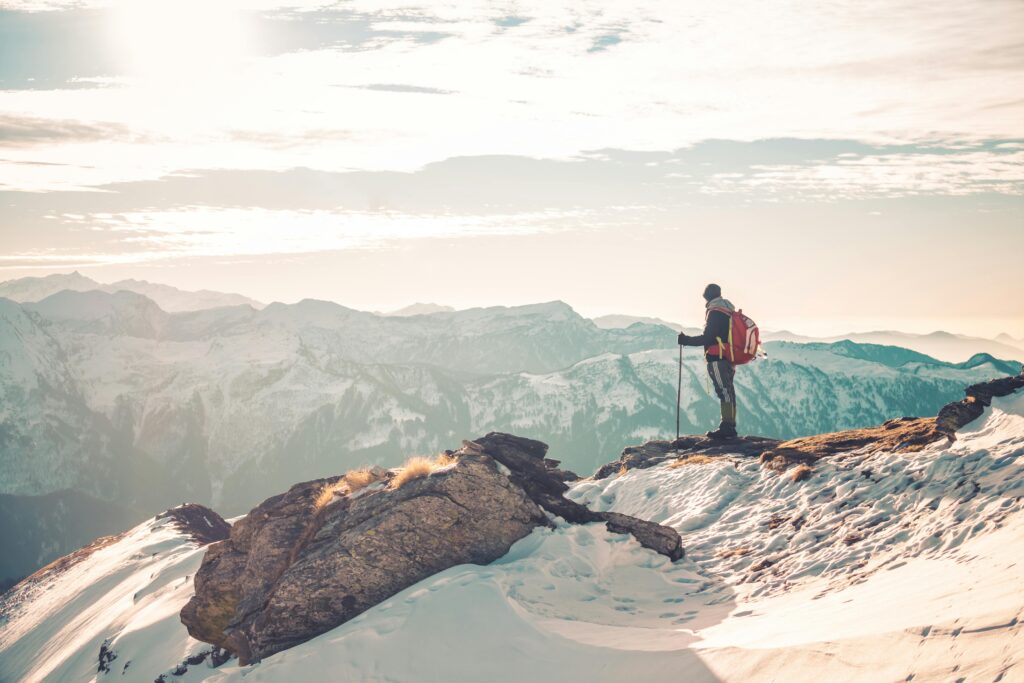
The lower reaches of the trek are characterized by dense and verdant forests, dominated by majestic trees like oak, pine, and deodar. These towering conifers create a canopy that filters sunlight, casting dappled shadows on the trail. The air is often filled with the fragrant scent of pine needles and the earthy aroma of the forest floor. As you gain altitude on your Chandrashila Summit Trek, the composition of the flora gradually shifts.
One of the most spectacular botanical highlights, particularly during spring (March to May), is the vibrant bloom of rhododendrons. These iconic Himalayan flowers paint the hillsides in dazzling hues of red and pink, creating a truly unforgettable spectacle for those on a Chopta tour package. The sight of these colorful blossoms against the backdrop of the snow-capped peaks is a photographer’s delight and a testament to the region’s natural beauty.
Further ascent on the Chandrashila Summit Trek leads you into alpine meadows, locally known as “bugyals.” These expansive grasslands, carpeted with a variety of grasses and wildflowers, offer a stark contrast to the dense forests below. You’ll encounter various species of alpine shrubs and hardy flowering plants adapted to the higher altitudes and cooler temperatures. This region is also known to harbor a variety of medicinal plants, traditionally used by local communities for their therapeutic properties. While admiring them, it’s crucial to remember to leave them undisturbed, respecting the delicate ecological balance of the sanctuary.
The Kedarnath Wildlife Sanctuary is not just a haven for plant life; it also supports a diverse range of fascinating fauna. While wildlife sightings can be unpredictable, trekkers on the Chandrashila Summit Trek have the chance to encounter some remarkable creatures. Keep an eye out for the elusive Himalayan Monal, Uttarakhand’s state bird, known for its vibrant plumage and distinctive calls.
Other potential wildlife sightings include the shy musk deer, known for its scent glands, and the Himalayan black bear, although encounters are rare and caution should always be exercised. Wild boars may also be spotted foraging in the forested areas. Bird enthusiasts will be delighted by the variety of avian species, including colorful pheasants and the majestic Himalayan griffons soaring overhead. Troops of playful langur monkeys are also commonly seen along the trails, and the occasional sighting of a red fox adds to the thrill of the trek.
Experiencing the flora and fauna along the Chandrashila Summit Trek, often as part of a comprehensive Chopta tour package, adds a rich dimension to the adventure. It’s a reminder of the delicate ecosystem that thrives in these high-altitude regions and underscores the importance of responsible trekking practices to preserve this natural heritage for future generations. By being observant and respectful, trekkers can truly appreciate the incredible biodiversity that makes this Himalayan journey so special.
Prioritizing Safety on Your Chopta Chandrashila Trek
Embarking on the Chopta Chandrashila trek, often a highlight of a Chopta tour package, is an exhilarating experience. However, ensuring a safe and enjoyable journey requires careful attention to essential safety precautions and guidelines. While the trek is considered moderately easy, the high-altitude environment and unpredictable mountain weather necessitate preparedness.

Acclimatization is a crucial first step, especially for those traveling from lower altitudes. Although the ascent to Chandrashila isn’t drastically high, gaining altitude gradually allows your body to adjust to the reduced oxygen levels. Spending a night in Chopta before the final ascent is advisable. Listen to your body, and if you experience any symptoms of altitude sickness like headache, nausea, or dizziness, descend immediately and seek rest.
Hydration is paramount throughout the Chopta Chandrashila trek. Dehydration can exacerbate the effects of altitude and lead to fatigue. Drink plenty of water regularly, even if you don’t feel thirsty. Carry a reusable water bottle and consider using water purification tablets or a water filter, especially if you are refilling from natural sources.
Mountain weather is notoriously unpredictable. Before starting your trek each day, meticulously check the weather forecast. Be prepared for sudden shifts in temperature, unexpected rainfall, or even snowfall, regardless of the initial conditions. Dressing in layers is key. This allows you to add or remove clothing as the temperature fluctuates, ensuring you remain comfortable and protected. Essential clothing includes thermals, fleece jackets, a waterproof and windproof outer layer, a warm hat, and gloves.
Wearing the right gear is non-negotiable for a safe Chopta Chandrashila trek. Invest in sturdy, waterproof trekking shoes with good ankle support and a reliable grip to navigate the varied terrain. Protect your eyes and skin from the strong mountain sun by carrying sunglasses and applying high SPF sunscreen.
A well-stocked first-aid kit is an absolute necessity. It should contain essential medicines for common ailments, bandages, antiseptic wipes, pain relievers, and any personal prescriptions you require. Knowing how to use the items in your kit is equally important.
For novice trekkers or those unfamiliar with the terrain, especially during less favorable weather conditions, hiring a local and experienced guide is highly recommended. A guide provides invaluable assistance with navigation, knows the local conditions, and can offer crucial support in case of emergencies, ensuring a safer Chopta tour package experience.
Staying on marked trails is crucial for your safety and for preserving the fragile mountain environment. Venturing off designated paths increases the risk of getting lost and can cause damage to the local flora and fauna.
Packing light is essential for a comfortable and safe trek. A lightweight backpack (around 8-10 kg) containing only necessary items will reduce strain and allow for better balance on the trails.
Finally, always respect nature. Avoid littering at all costs; carry all your waste back with you. Do not disturb the local wildlife or pick any plants. Leave no trace of your passage, ensuring the pristine beauty of the region remains for others to enjoy as part of their Chopta Chandrashila trek or Chopta tour package. By adhering to these essential safety precautions and guidelines, you can maximize your enjoyment and ensure a memorable and safe Himalayan adventure.
Accommodation Options for Your Tungnath Chandrashila Trek
Planning your Tungnath Chandrashila trek, potentially as part of a Chopta tour package from Delhi, involves considering the various accommodation options available along the route. The choices range from basic yet comfortable guesthouses to the immersive experience of camping under the starlit Himalayan sky. Understanding these options will help you tailor your trek to your comfort level and budget.
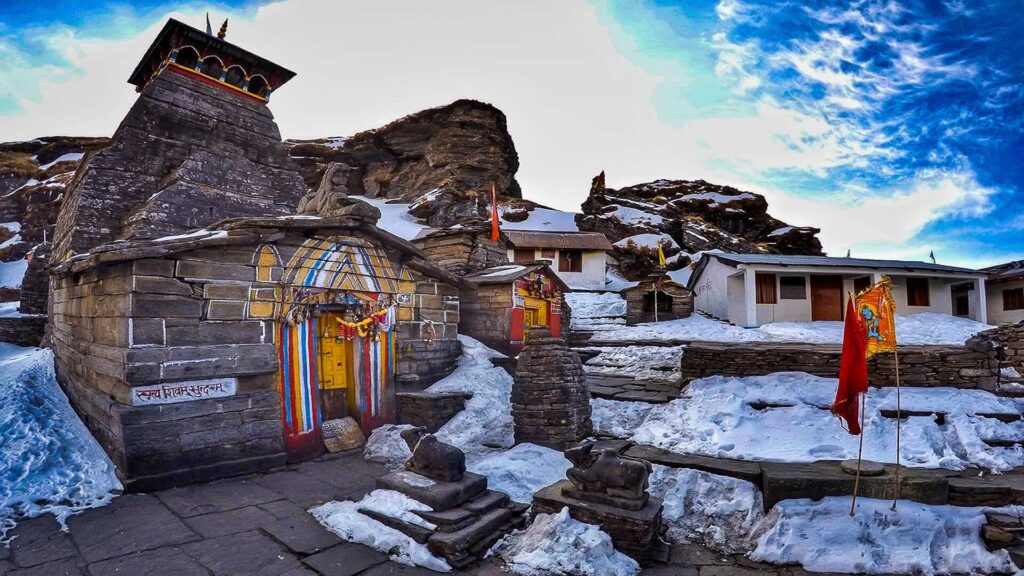
Chopta, serving as the primary base camp for the Tungnath Chandrashila trek, offers the widest array of accommodation. Here, you’ll find several basic guesthouses and budget hotels providing simple rooms with essential amenities. These are a popular choice for trekkers seeking a roof over their heads and a bed for the night before or after their ascent. Additionally, Chopta has numerous campsites. Many organized Chopta tour packages from Delhi include camping arrangements in Chopta, providing tents and basic camping gear. This option allows you to fully immerse yourself in the natural beauty of the region, surrounded by meadows and forests. The campsites often have basic facilities like common toilets.
If your itinerary includes a detour to Deoriatal, a serene lake offering stunning Himalayan views, camping becomes the primary accommodation choice. Near Deoriatal, you’ll find well-established campsites. These sites typically offer basic facilities and provide an opportunity to spend a night amidst the tranquil surroundings of the lake. Waking up to the reflections of the snow-capped peaks in the pristine waters of Deoriatal is an unforgettable experience.
As you ascend towards Tungnath, accommodation options become more limited. Near the Tungnath Temple itself, you might find a few basic guesthouses or ashrams offering rudimentary lodging. These are often simple shelters providing necessities for pilgrims and trekkers. Due to the limited availability at Tungnath, many trekkers undertaking the Tungnath Chandrashila trek prefer to stay in the more varied accommodations available in Chopta and undertake the trek to Tungnath and Chandrashila as a day excursion, returning to Chopta for the night. This allows for a wider choice of comfort levels and amenities.
For those whose trek itinerary begins with an exploration of Deoriatal, the village of Sari, the starting point for the Deoriatal trek, offers homestays and guesthouses. These provide a comfortable and often culturally enriching experience, allowing you to interact with local families and sample local cuisine before commencing your onward journey towards Chopta and Tungnath.
When booking your Tungnath Chandrashila trek, especially if opting for a Chopta tour package from Delhi, it’s crucial to inquire about the included accommodation. Understand the type of lodging (guesthouse, hotel, or tent), the facilities provided, and its location relative to the trekking route. During peak seasons, it’s advisable to book your accommodation in advance to ensure availability, particularly in Chopta. Whether you prefer the comfort of a basic guesthouse or the adventure of camping under the stars, the region offers options to suit different preferences and budgets for your memorable Himalayan trek.
Extending Your Himalayan Exploration: Nearby Attractions Beyond the Tungnath Temple Trek
Embarking on the Tungnath Temple trek, often a highlight of a Chopta Tungnath trek from Delhi, opens a gateway to a region brimming with natural beauty, spiritual significance, and charming villages. While the trek to the highest Shiva temple and the onward climb to Chandrashila are undoubtedly the main draws, the surrounding area offers a plethora of captivating attractions that are well worth exploring, enriching your Himalayan experience.
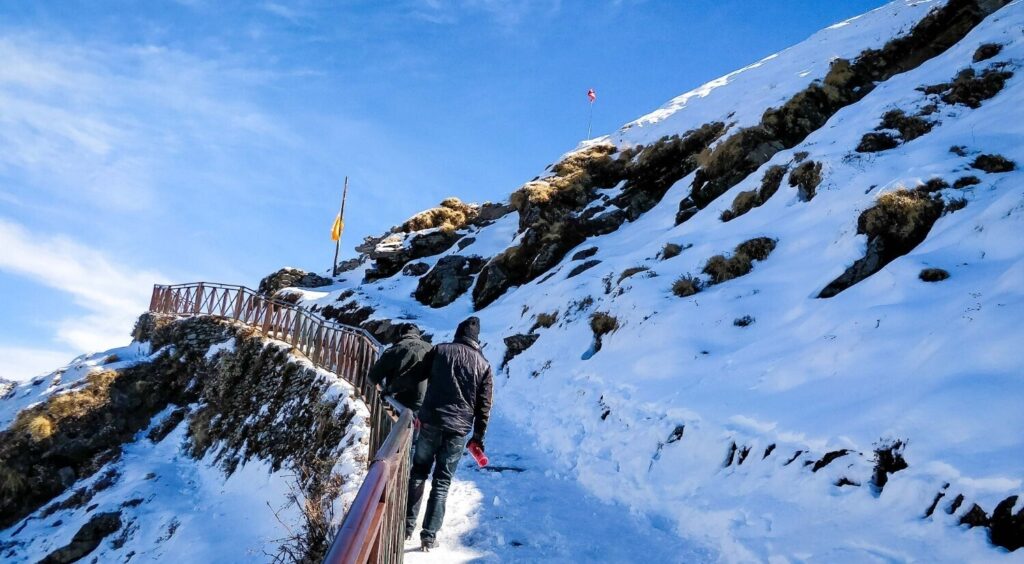
The Tungnath Temple itself is a primary point of interest. As the highest Shiva temple globally and one of the revered Panch Kedars, it holds immense religious significance. Its ancient architecture and the serene atmosphere at this high altitude are deeply captivating. Located just below the Chandrashila summit, a visit to the temple is an integral part of the Tungnath Temple trek.
A short and scenic detour from the main Chopta route leads to the enchanting Deoriatal. This pristine lake, nestled amidst forests near Sari village, offers breathtaking panoramic views of the snow-capped Himalayas, including reflections of Chaukhamba peaks in its tranquil waters. A trek of about 1-2 hours from Sari brings you to this idyllic spot, making it a popular addition to many itineraries, especially for those undertaking a Chopta Tungnath trek from Delhi. Camping near Deoriatal provides an unforgettable experience of waking up to the majestic Himalayan vista.
Chopta, the base camp for the Tungnath Temple trek, is a destination in itself. Often referred to as the “Mini Switzerland of Uttarakhand,” this scenic hill station boasts lush green meadows, dense forests of oak and rhododendron, and stunning views of the surrounding peaks. Spending time in Chopta allows you to soak in the peaceful environment and enjoy the natural beauty before or after your trek. It’s an ideal place for relaxation and acclimatization.
For those interested in delving deeper into the region’s spiritual heritage, a visit to Ukhimath is highly recommended. Serving as the winter seat of Lord Kedarnath and Lord Madhyamaheshwar, this town houses several important temples. During the winter months, the idols from Kedarnath and Madhyamaheshwar are brought down to Ukhimath for worship. Exploring the temples and learning about the local religious traditions offers a fascinating cultural insight, particularly for those on a Chopta Tungnath trek from Delhi seeking a broader understanding of the region.
Sari Village, the quaint starting point for the Deoriatal trek, is another charming place to explore. Surrounded by oak and rhododendron forests, this small village offers a glimpse into rural Himalayan life. Interacting with the friendly locals and experiencing the traditional way of life can be a rewarding cultural experience.
Finally, the small village of Mandal, located a bit further away, is known for its natural beauty and tranquility. While it might require a slightly longer detour, its serene atmosphere and picturesque landscapes offer a peaceful retreat for those with extra time to explore beyond the immediate vicinity of the Tungnath Temple trek.
Incorporating these nearby attractions into your itinerary, whether you’re on a comprehensive Chopta Tungnath trek from Delhi or focusing primarily on the Tungnath Temple trek, will undoubtedly enhance your overall experience, providing a richer and more diverse exploration of this captivating Himalayan region.
Preparing for Your Himalayan Adventure: The Essential Packing List for the Chandrashila Trek
Embarking on the Chopta Tungnath trek, often a highlight of a Chopta tour package, requires careful preparation, and packing the right essentials is paramount for a comfortable and safe journey. The unpredictable mountain weather and varying altitudes necessitate a thoughtful approach to what you carry. Here’s a comprehensive packing list to ensure you are well-equipped for your Himalayan exploration.

Clothing: Layering is key to staying comfortable in the fluctuating temperatures. Pack warm base layers (thermals) to wick away moisture, insulating layers like fleece jackets and a down jacket for colder conditions, and a waterproof and windproof outer jacket and pants to protect against rain and snow. Opt for comfortable and breathable trekking pants and moisture-wicking t-shirts for hiking. Don’t forget a warm hat and gloves to protect against the cold, a scarf or neck gaiter for added warmth and face protection, and several pairs of comfortable trekking socks to keep your feet dry and blister-free.
Footwear: Your trekking shoes are arguably the most crucial piece of gear. Choose sturdy, waterproof trekking shoes with good ankle support and a reliable grip to navigate the varied terrain. Carry an extra pair of socks to change into, especially after a long day of trekking.
Backpack: A lightweight and comfortable backpack with a capacity of 30-40 liters is ideal for carrying your essentials. Ensure it has a rain cover to protect your belongings from unexpected showers. Choose a pack with comfortable straps and a supportive hip belt to distribute the weight evenly.
Hydration: Staying hydrated is crucial at high altitudes. Carry a reusable water bottle or a hydration pack with sufficient capacity. Consider bringing water purification tablets or a water filter, especially if you plan to refill your water from natural sources along the way.
Snacks: Pack high-energy snacks like energy bars, dry fruits, nuts, and chocolates to keep your energy levels up between meals. These are lightweight and provide a quick source of fuel during the trek.
First-Aid Kit: A well-equipped first-aid kit is essential for dealing with minor injuries or ailments. Include essential medicines, bandages, antiseptic wipes, pain relievers, blister treatment, and any personal prescriptions you may need.
Lighting: A headlamp or a torch with extra batteries is crucial for navigating in low light conditions, especially if you are trekking early in the morning or late in the evening, or case of power outages at campsites or guesthouses.
Sun Protection: The sun’s rays are intense at high altitudes, even on cloudy days. Protect your eyes with sunglasses and your skin with a high SPF sunscreen and lip balm with SPF.
Navigation: If you are trekking independently, carry a map and compass and know how to use them. However, if you are trekking with a guide as part of a Chopta tour package, you can rely on their navigation skills.
Personal Items: Pack essential toiletries, a quick-drying towel, and hand sanitizer to maintain hygiene during the trek.
Optional Items: Trekking poles can provide better balance and support, especially on steep ascents and descents. A camera and binoculars are great for capturing the stunning scenery and observing wildlife. A power bank can be useful for charging your electronic devices. If you have any personal medications, ensure you carry an adequate supply.
By carefully considering this essential packing list, you can ensure a comfortable, safe, and enjoyable Chopta Tungnath trek as part of your Chopta tour package, allowing you to fully immerse yourself in the breathtaking beauty of the Himalayas. Sources and related content
Frequently Asked Questions (FAQs)
How long does it typically take to complete the Chandrashila Trek?
A typical itinerary from Chopta to Chandrashila and back can be done in 1-2 days. Including Deoriatal can extend the trek to 3-5 days.
What is the Chandrashila Summit Trek?
The Chandrashila Summit Trek is a popular trek in Uttarakhand, India, reaching the summit above the Tungnath Temple. It offers panoramic views of major Himalayan peaks like Nanda Devi, Trisul, and Kedar Peak.
Where does the Chandrashila Trek start?
The most common starting point for the trek is Chopta, often referred to as the “Mini Switzerland of Uttarakhand.” Another route starts from Sari village, leading via Deoriatal.
What is the difficulty level of the Chandrashila Trek?
The trek is generally considered easy to moderate, making it suitable for beginners and experienced trekkers. The initial stretch to Tungnath is easier, while the final ascent to Chandrashila is steeper but short.
What is the best time to visit Chandrashila?
The best times are spring (March to May) for blooming rhododendrons and pleasant weather, and autumn (September to November) for clear skies and excellent mountain views.
Do I need any permits for the Chandrashila Trek?
Generally, Indian nationals do not require specific permits. Foreign nationals should check the latest regulations. Nominal forest entry or camping fees might apply.
What is the approximate cost of the Chandrashila Trek?
The cost varies depending on the duration, accommodation type, inclusions, and whether you opt for an organized tour. A basic 3-day/2-night package can range from ₹4,000 to ₹8,000 per person.
What kind of accommodation is available during the trek?
Options include basic guesthouses and campsites in Chopta, camping near Deoriatal (if included), and limited basic guesthouses/ashrams near Tungnath.
What are some of the key attractions along the trek?
Key attractions include Chopta, Tungnath Temple (the highest Shiva temple), the Chandrashila summit with its views, and Deoriatal (if the itinerary includes it).
What kind of flora and fauna can I expect to see?
The trek passes through the Kedarnath Wildlife Sanctuary, with forests of oak, pine, deodar, and rhododendron. Wildlife sightings may include the Himalayan Monal, musk deer, and various bird species.
What essential items should I pack for the trek?
Essential items include warm layers, waterproof clothing, sturdy trekking shoes, a backpack, water bottle, snacks, a first-aid kit, headlamp, sunglasses, and sunscreen.
Is it necessary to hire a guide for the Chandrashila Trek?
Hiring a guide is highly recommended, especially for beginners or during less favorable weather conditions, for safety and navigation.
What are the risks involved in the Chandrashila Trek?
Potential risks include altitude sickness, sudden weather changes, slippery trails, and wildlife encounters. Following safety precautions minimizes these risks.
How can I prepare physically for the Chandrashila Trek?
Basic physical fitness is required. Regular cardio exercises and some strength training are recommended.
Can the Chandrashila Trek be done in winter?
Trekking in winter (December to February) is challenging due to heavy snowfall and potential road closures to Chopta. The Deoriatal route is often used during this time.
Recent Posts
Chakrata in Winters
Madmaheshwar Trek Difficulty & Beginner’s Complete Guide
Chopta in Winters
Tags

Thailand


